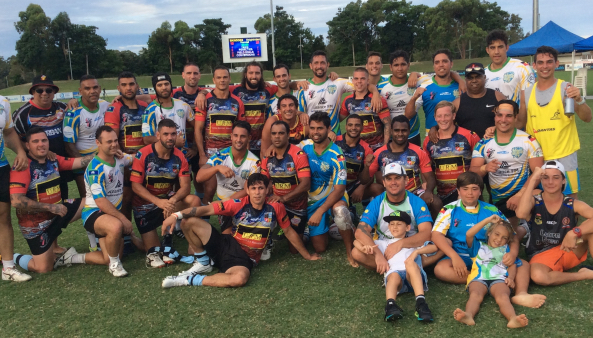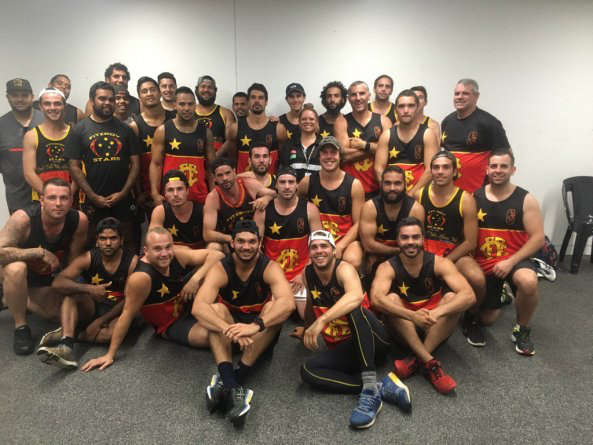WorldActivityDay: Snapshot report physical activity programs for Aboriginal people in Australia
” This is important as sharing information about program practice is an important part of effective health promotion and can serve to guide future initiatives. The Ottawa Charter outlines a settings based approach to effective health promotion. We found most programs were delivered in community, followed by school, settings. Both have proven efficacy in achieving health outcomes. They are likely be particularly effective settings for reaching Aboriginal and Torres Strait Islander people given the importance of holistic health promotion and whole-of-community approaches. Capturing current practice can inform future efforts to increase the impact of physical activity programs to improve health and social indicators. Targeted, culturally relevant programs are essential to reduce levels of disadvantage experienced by Aboriginal and Torres Strait Islanders ”
Rona Macniven, Michelle Elwell, Kathy Ride, Adrian Bauman and Justin Richards Prevention Research Collaboration, Charles Perkins Centre, University of Sydney, & Australian Indigenous HealthInfoNet
Picture above : Redfern All Blacks recently won the Women’s Division Ella Sevens Rugby Union tournament in Coffs Harbour beating the Highlanders 36-7
A snapshot of physical activity programs targeting Aboriginal and Torres Strait Islander people in Australia
Picture above: The Knight Riders beat the Shindogs 28-21 in the Men’s Final Ella Sevens Rugby Union tournament in Coffs Harbour

Issue addressed
Participation in physical activity programs can be an effective strategy to reduce chronic disease risk factors and improve broader social outcomes. Health and social outcomes are worse among Aboriginal and Torres Strait Islanders than non-Indigenous Australians, who represent an important group for culturally specific programs.
The extent of current practice in physical activity programs is largely unknown. This study identifies such programs targeting this population group and describes their characteristics.
Aboriginal Health
Almost a third of programs aimed to promote physical activity to achieve broader social benefits such as educational and employment outcomes and reduced rates of crime. Health and sport programs are worthy crime prevention approaches.
There are also recognised relationships between physical activity and fitness level and academic achievement as well as social and mental health benefits specific to Aboriginal and Torres Strait Islander populations.
However, a cautious approach to alluding to wider social benefits directly arising from individual programs should be taken in the absence of empirical evidence, as well as the direct effects of standalone programs on health.
Yet the documentation of existing program evaluation measures in this snapshot represents a vital first step in reviewing programs collectively and some have demonstrated encouraging evidence of positive educational and employment outcomes.
There is also some evidence of social benefits, such as community cohesion and cultural identity; derived from sport programs in this snapshot, which are important for Aboriginal and Torres Strait Islander health.
Such programs might therefore contribute to corresponding ‘Closing the Gap’ policy indicators and should be resourced accordingly.
Methods
Bibliographic and Internet searches and snowball sampling identified eligible programs operating between 2012 and 2015 in Australia (phase 1). Program coordinators were contacted to verify sourced information (phase 2). Descriptive characteristics were documented for each program.
Results
A total of 110 programs were identified across urban, rural and remote locations within all states and territories. Only 11 programs were located through bibliographic sources; the remainder through Internet searches.
The programs aimed to influence physical activity for health or broader social outcomes. Sixty five took place in community settings and most involved multiple sectors such as sport, health and education.
Almost all were free for participants and involved Indigenous stakeholders. The majority received Government funding and had commenced within the last decade. More than 20 programs reached over 1000 people each; 14 reached 0–100 participants. Most included process or impact evaluation indicators, typically reflecting their aims.
Conclusion
This snapshot provides a comprehensive description of current physical activity program provision for Aboriginal and Torres Strait Islander people across Australia. The majority of programs were only identified through the grey literature. Many programs collect evaluation data, yet this is underrepresented in academic literature.

The Famous AFL “Fitzroy All Stars from Melbourne
Fonte: NACCHO Aboriginal Health News Alerts